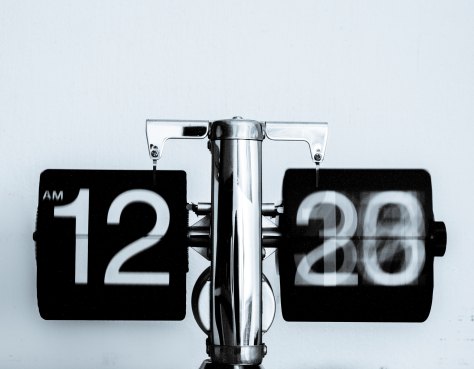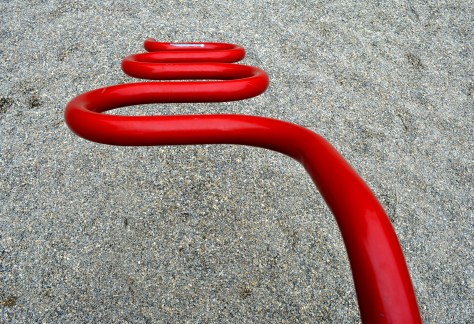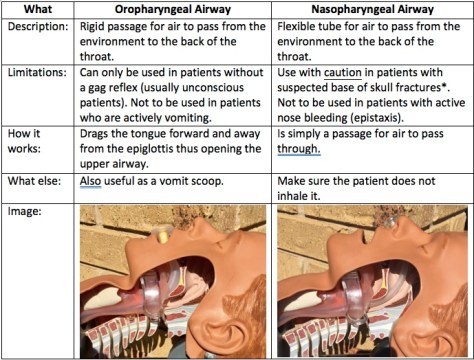It’s been a solid break but here is Andrew Weatherall returning with a bit about just one approach to getting access to plasma in the field.
In prehospital medicine there aren’t really many limits to what we can carry. Ultrasounds are routine. Intubation gear is boring. We even carry patients some of the time.
Plus since 1987 we’ve carried red cells for transfusion. Which is excellent. And we’ve used plenty. Sometimes though you want to change things up and changing things takes time. Like say, changing what you carry for transfusion. Which only took us 30 years or so.
How you get it done…
Us carrying red cells has been reality through a range of different attitudes to transfusion. Where we find ourselves now of course is thinking that if you need fluids in the setting of trauma then the fluid should not be see through. For a while though we’ve been trying to figure out how to extend beyond red cells.
The thing is that now that we know that acute traumatic coagulopathy (ATC) is a thing, and we’ve known that for a pretty decent amount of time now, you need to be wrestling with how to try and deal with the coagulopathy bit, not just dish out the vampire-sating stuff.
So what to use…
If you go to look at the literature, for a while there’s been plenty out there saying that fibrinogen might be a useful thing to go with. So we’ve been waiting a while for freeze-dried cryoprecipitate but last time we looked it came out as a little bit pricey for our taste but there was something more significant.
Time.

The more significant thing for our work profile was just the fact that preparing FCCs takes a bit of time and would probably take a team member out of action for too long. That might be a different story if we were doing retrieval or more remote pick-ups, but for metropolitan responses it just didn’t quite seem to fit.
So we kept giving the red cells. Then when TXA gained some evidence, we added that. That one’s quick.
Trauma centres kept publishing on the role of viscoelastic testing but that didn’t fit our work profile either. So we were stuck there.
And whole blood was not on the table in our neck of the woods.
It kept nagging at us though. What’s the other thing we should be giving?
Which is why we went to chat to a clever person at the place we pick up our blood.
The Ideas Bank
At this point something we’d discounted as an option suddenly became an option. Plasma.
It just hadn’t seemed like an option for us because of the issues around thawing time and the need to use it within 4 hours. That’s not true anymore though. Extended life plasma (ELP) is now available and is OK to use for 4 days after thawing. Add that to some evidence that group A ELP is suitable for use as a donor unit in the adult patient population (rather than having to always use group AB) and our blood bank contact had come up with a plan to do something different.
So this was the plan:
- Switch what was in our blood esky from 3 units of O- red cells to 2 units of O- red cells and 2 units of group A ELP.
- At the end of the shift (this operation is running one shift per day), return the products as usual to the blood bank.
- The ELP can then go back into the pool used by the hospital blood bank.
And we figured we’d start the plasma early, maybe after the first lot of red cells.
There were to be some limits of course, particularly when it comes to kids. Try as we might, we just couldn’t find guidance for kids under 11 to see if group A ELP alone would be appropriate. Same story for the paeds haematologists. So kids were out.
The Introduction
The whole thing got moving within a few short months and the plasma hit the esky in April. It was introduced with lots of discussion and education and an undertaking to keep track of the results.
It really was seamless. We just sort of needed the evidence to back up the expert advice of the haematologists.
Catching Up
And this is where another bit of fortuitous timing worked in our favour. A trial came out.
PAMPer reared up in the NEJM showing a very solid difference in mortality in those given plasma in the prehospital phase. This was patients between the age of 18 and 90 and with evidence of haemodynamic things that matter – systolic blood pressure under 90 mmHg (or a single reading hitting 70 or below) and heart rate above 108/minute. 5 minutes of being arrested was also enough to get a number of people kicked to the side.
It’s also worth mentioning that they just gave their 2 units of plasma in their entirety. Some of the centres were carrying red cells so if they were being treated as recruitment centres administering “standard” resuscitation for a particular day, there was a total of 13 of the 27 centres who might go ahead and give some red cells.
A total of 501 participants were eventually randomised. 30 days after the patients were randomised the number of deaths in the standard care group was 89. This is significant compared to the 53 deaths in the plasma group. After regression analysis, those in the plasma group had a risk of death 39% lower than standard care. There were also mortality differences at 24 hours and in the “in-hospital” cohort.
As a bonus, patients in the plasma group received fewer units of blood components overall. Plus they had no documented cases of transfusion-related lung injury during the trial.
So that was enough to make us tweak things a little more and consider the plasma as our first line resuscitation in most instances, followed by the red cells.
What makes it work?
So for now this solution works in our context. That’s not to say it would work for everyone or would be the best choice for different work profiles. We note that London’s excellent HEMS service has just recently introduced bags with both red cells and FFP in them and that’s a different approach again which will be worth watching. And even more recently the crew from Kent Surrey Sussex Air Ambulance Trust have published a retrospective study sharing their success with freeze-dried plasma.
It’s also not to say we won’t seek to tweak things in the future. There are a few key things that made the use of ELP work for us:
- Local experts
There’s no doubt that the ‘who you know’ factor helped in setting this up. Being able to approach the local expert, in our case Dr Leo Pasalic (full credentials below), who could think laterally when we approached with a query opened up an avenue we had dismissed. Leo was also able to place it in the context of a broader understanding of the literature. There’s no literature search that’s a replacement for long experience and cultivated expertise.
- A very excellent blood bank
A nearby blood bank that supports that expert person with great service is a pretty crucial part of the mix. As clever as Leo is (and he is pretty clever), the whole plan hinges on other clever people who pull off the ‘let’s make this happen’ bit and have that extra understanding of the science and logistics. For us those other key people were Dr Kifah Shahin and Hayley Keenan (you should check their full credentials below too). From the time of deciding to do this to actually carrying the ELP was weeks at most and the logistics have never been an issue. They added the packs and made it work.
- Reduce, reuse, recycle
When giving blood products we are, naturally, also trying to nourish our inner greenie. I mean, as it is we’re aiming to reduce the overall usage of blood products throughout the admission. We also want to make sure we’re not thawing the ELP and not being able to use it. Blood products are a precious resource and the cost of production is also high. To date, not a single unit of ELP has gone unused. It’s thawed for the prehospital service, returned at the end of shift and invariably used well within the permitted timeframe by the very big hospital for other patients.

- The follow-up plan
The plan for tracking the experience of use is already in place so we can confirm our local experience with this new option. Trial evidence is great but ongoing real world monitoring has to come with the territory.
We’ve come a fair distance from our early forays into prehospital blood administration which involved the side of a road, a hospital somewhere nearby and police doing high speed runs to deliver those units.
It’d be good if the next step took less than 30 years though.
Notes:
Before we get into the references, we would really like to acknowledge the support of the NSW Health Pathology through their Blood Bank at Westmead Hospital and the brilliant staff working there.
Dr Leo Pasalic is a staff specialist in laboratory and clinical haematology and transfusion medicine and gets to cover the medical supervising responsibilities at the Blood Bank at Westmead Hospital.
Dr Kifah Shahin is the Transfusion Lead Scientist for the West, Rural and Regional laboratories in NSW Health Pathology.
Hayley Keenan is a Transfusion Senior Scientist at NSW Health Pathology Westmead.
That Blood Bank they work at is part of the Department of Haematology at the Institute of Clinical Pathology and Medical Research, NSW Health Pathology, Westmead Hospital. The hospital has been on that location for 40 years. The ICPMR got there first, having been on the site for 41 years.
Now, the reading list.
Here’s the link to the PAMPer thing again:
This isn’t the only story out there of course. The paper from Moore et al is worth a look.
And that Kent paper again:
Now, some others:
Winearls J. Fibrinogen in Traumatic Haemorrhage: A Narrative Review. Injury. 2017; 48:230-42.
















